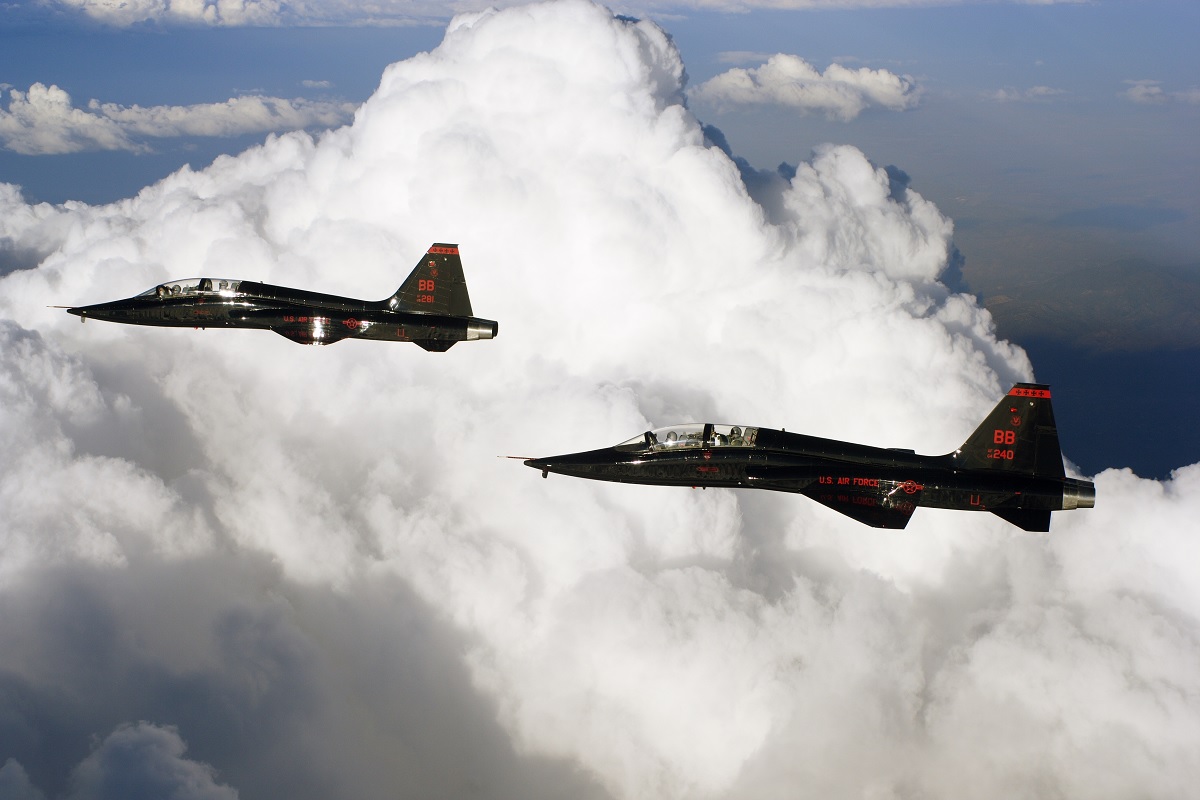Due to the limited size of the U-2 fleet, instrument and general flying training on the T-38 keeps pilots up to date and skilled
Above Beale Air Force Base (AFB), the T-38 Talon may be seen in the sky together with the U-2 Dragon Lady and the RQ-4 Global Hawk. The T-38 is an essential tool that U-2 pilots employ to carry out their mission and help the U.S. Air Force (USAF) as a whole, even though it may not directly provide intelligence, surveillance, and reconnaissance (ISR).
“The T-38s are a part of the Companion Trainer Program for the U-2 pilots at Beale,” said Lt. Col. Paul Wurster, 1st Reconnaissance Squadron commander. “The U-2 fleet is small so our pilots only get three or four flights per month on average. The T-38 is used to provide instrument and general flight training which keeps our pilots current and proficient.”
Even though many people assist in T-38 flight operations, a group of mechanics plays a crucial part. These non-military contractors maintain the aircraft so that it is always ready to take off.
“We get all of the aircraft prepared for the daily flying schedule,” said Sam Holmes, 9th Maintenance Group (MXG) T-38 aircraft mechanic. “After each flight, we recover the aircraft, we refuel them, inspect them, and send them back up.”
The T-38 has a shorter turnaround time between flights than the U-2 because of its bigger fleet on Beale and less frequent maintenance needs. This gives the pilots the opportunity to complete more sorties.

“We fly almost every day and fly upwards of 30 pilots in that time,” said Matt Miller, 9th MXG T-38 aircraft mechanic. “We can fly between 12 and 15 sorties no problem.”
The level of knowledge of the mechanics is what makes the aforementioned flying schedule possible. Nearly all T-38 maintenance is carried out internally, much of it preventative maintenance.
“The preventative maintenance is to ensure the airworthiness of the aircraft,” said Miller. “A lot of small problems can be stopped from becoming big problems, but things do break. As the issues arise, we work to get the aircraft back in the air as quickly as possible.”
The thorough inspections carried out by the mechanics guarantee the safety of the pilots by identifying the bigger problems early.
“We do both preflight and post-flight inspections and inspections every 25 and 225 flight hours,” said Holmes. “We have an oil sampling program we do every 20 flight hours.”
It takes a lot of time inside a T-38 to maintain a pilot’s proficiency. Equally significant is the time the mechanics spend maintaining the aircraft.
“The mechanics make it possible to fly multiple flights a day,” said Wurster. “Their work keeps our flight operations safe and efficient.”

Story by Airman Tristan D. Viglianco, 9th Reconnaissance Wing Public Affairs; Photo by Airman Tristan D. Viglianco, Staff Sgt. Robert M. Trujillo amd / U.S. Air Force

